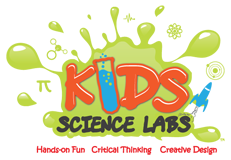Chicago STEM Trips build long-term memories for students
We offer the most engaging STEM field trips, focused on Amplify Science and NGSS for elementary, milddle school PreK students. Kids Science Labs offers a wie range of Chicago STEM trip opportunities for small groups, girl scouts, and large classrooms for kids 3+. Our STEM enrichment activities boost Science Facts and are all aligned with NGSS, to ensure tha our students can enjoy hands-on science, engaging science enrichment activities, and do everything from educational and safe shark dissections to learning how to increase the size of bubbles.
Kids Science Labs is the ideal Chicago STEM trip for Kids 3+
Beyond our in-person Chicago STEM Field Trip experience, we also offer STEM Labs for those campuses that desire us to send teachers and materials to their school. Our Chicago Field Trips @ KSL include an on-site experience for schools that prefer to take us bus to the best hands-on science Field trips in Chicago at our Field Trip HQ in the South Loop. We encourage you to also join science museums, like the Field Museum and Museum & Science and Industry and tour their interactive exhibits as well, but Kids Science Labs is just different. When teachers are looking for direct STEM programs to address their required STEM enrichment activities, look no further htan KSL. Our field trips cover many topics, which you can find here:
Kids Science Labs is the the 1st Choice for Chicago STEM trips and Chicago Area Teachers
If you are looking to find out why Kids Science Labs is the #1 Ranked Choice for Childcare, Elementary School, and Middle School Teachers, check out our intro video on Field Trips. Beyond providing a truly engaging experience in education STEM environments for kids, Chicago area Kids Science Labs offers over 300 NGSS hands-on science classes, that are unrivaled in the United States anywhere. Kids Science Labs includes Chicago STEM Programs and Chicago STEM Field Trips such as
Best Science Summer Camps for Kids
Best Kid’s Birthday Party Places for Chicago Kids
Best STEM Field Trips
Best At-School STEM Enrichment Activities for Elementary Schools
Best Educational STEM Opportunities and Professional Learning For Teachers
STEM Attractions that Make Unforgettable Chicago STEM Field Trips @ Kids Science Labs
Whether its our award winning Shark Dissection as a capttone Chicago STEM Field Trip, or experimenting with the life cycle of plants and animals in an ecosystem for Kindergarteners, our STEM Field Trips are world renown and full of un hands-on science activities for kids. Find out more below and save












